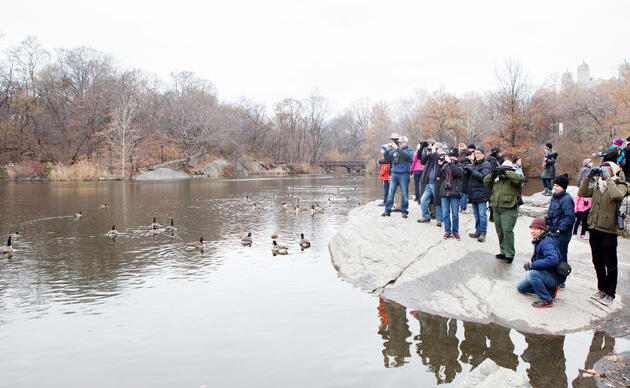Fargo Falcons & Bank of the West
There is obviously something about the Bank of the West building that is very appealing from a falcon’s point of view. Since 1990, a succession of peregrines have visited this location. In recent years, the building has served as the home-base for our nesting pairs. In 2001, history was made when a successful nesting occurred at this site. This was the first time in almost half a century that peregrine falcons had nested in North Dakota.
To start at the beginning, in May, 1990, two peregrines were observed near the top of what was then the First Interstate Bank building. One bird was a mature female, the other was a juvenile male. The female was unbanded. The young male was banded, and had presumably been released into the wild the previous summer. Initially, these birds appeared to be a pair looking for a nest site. Accordingly, a nest tray was hastily constructed and installed near the top of the east wall. Even before this was accomplished, however, the female had departed. The male stayed longer, but after several weeks he also moved on.
In hindsight, it is reasonably clear this first pairing was temporary and mostly coincidental. The female was probably a “wild” bird on her way to the arctic tundra, where one subspecies of the peregrine falcon has traditionally nested. The young male bird was likely also doing what comes naturally, wandering about looking for a mate and a territory of his own.
Between 1991 and 1999, an unbanded, mature peregrine was seen on the building for several days each May. Presumably this was the same female first sighted in 1990, stopping for a rest on her long migration north. During this same period, the building changed hands and new signs were placed. Fortunately, the new owner took steps to keep the nest tray in place, waiting for use.
In the spring of 2000, Fargo experienced what can relatively be characterized as an invasion of peregrines. Moreover, these falcons were clearly looking for a nest site. At times, three or four birds were simultaneously attempting to lay claim to the nest tray. It took a few weeks for this process to work itself out, but in the end we had Fargo’s first territorial pair of falcons. The male was a mature bird named Dakota Ace. He was hatched in captivity in 1997, and released as a fledgling in Sioux Falls, South Dakota. The female was a juvenile, named Goldie, who had hatched the previous year in Omaha, Nebraska.
First year peregrines rarely breed or nest. However, they can establish territories and pair bonds that set the stage for subsequent nestings. That is exactly what happened in 2001. Both Dakota Ace and Goldie returned early that year. By late April eggs were being incubated, and those eggs began to hatch around the first of June. On June 22, the young were temporarily removed from the nest tray for banding. At the same time, the tray itself was replaced with a larger, covered structure. The young birds, two females and a male, left the nest box in mid-July. Over the next month they became increasingly independent and self-sufficient, ultimately striking out on their own.
Dakota Ace continues to reign as the only male peregrine who has successfully laid claim to the Bank of the West nest site. Over time, he has paired with three different females. Nest success has been high. Therefore, events similar to those first observed in 2001 have been repeated almost every year since.
In late 2004, the building was acquired by Bank of the West, which from the outset has been an enthusiastic supporter. It has financed much of the subsequent nest box or camera installations. Most significantly, Bank of the West has acted as a gracious and accomodating host, both for the birds and for the annual bandings.

How you can help, right now
Support Rowe Sanctuary
Help us continue our important work for Sandhill Cranes and other birds that rely on the Platte River ecosystem!
Support Spring Creek Prairie
We are able to provide and protect this amazing landscape only with the help of private donations. Help us keep the trails open and the prairie thriving!
Support Audubon in the Great Plains
Support our work with local landowners, urban woods and prairies, and education programs in Nebraska and the Dakotas!




